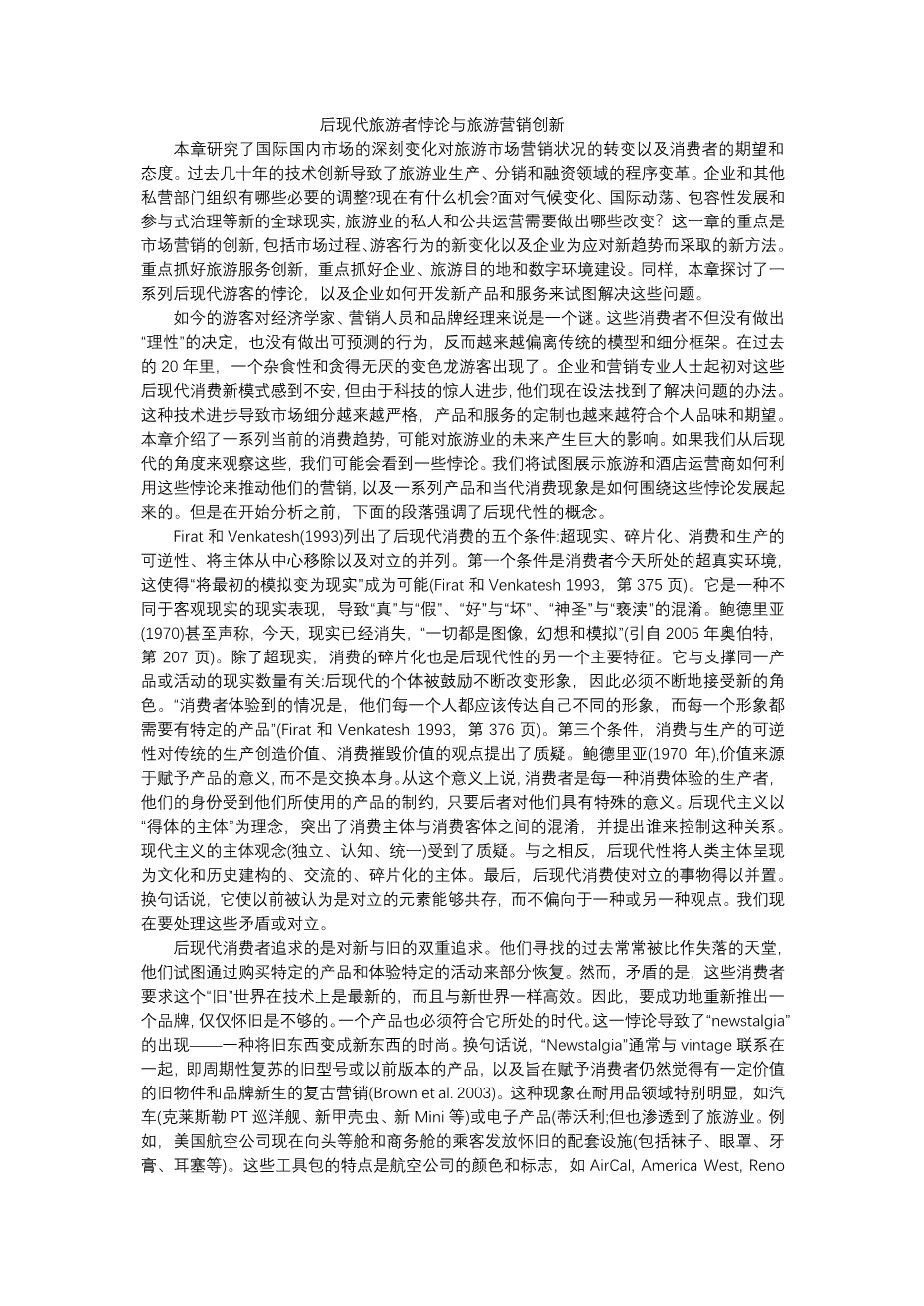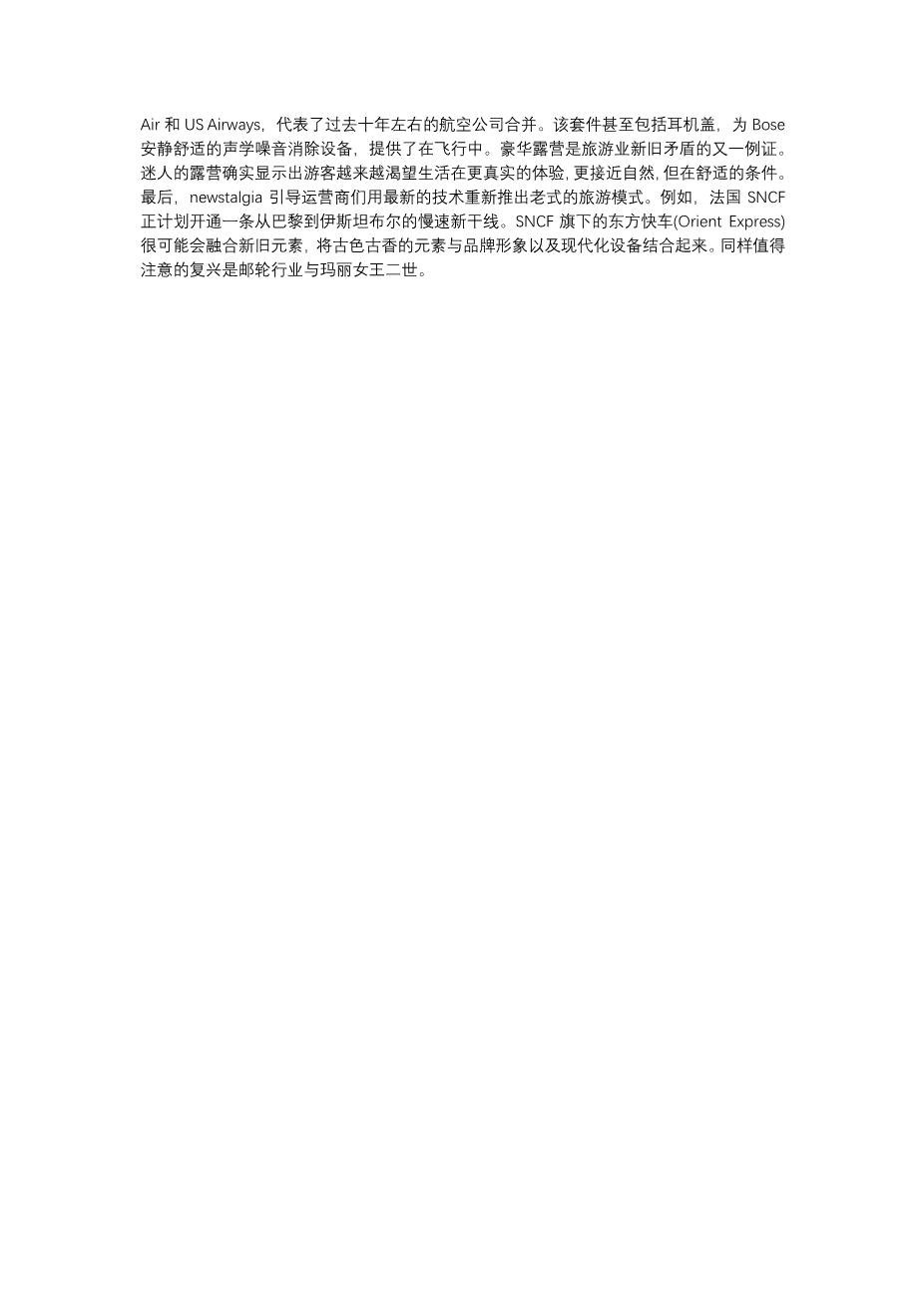Paradoxes of Postmodern Tourists and Innovation in Tourism Marketing
This chapter studies the shifting state of the matter for tourism marketing vis-à-vis profound changes in international and domestic markets as well as consumer expectations and attitudes. Technological innovations in the last decades have resulted in procedural upheavals within tourism production, distribution, and financing. What adaptations have been necessary in businesses and other private sector organizations? What opportunities are opening up? What changes will be necessary in the private and public operation of tourism in view of the new global realities of climate change, international unrest, inclusive development and participatory governance?
The chapter focuses on innovation in marketing,involving market processes,new changes in tourist behavior and new approaches adopted in companies to face new trends. A special emphasis is given to service innovation in tourism, with special focus on companies, tourist destinations and the digital environment. Likewise the chapter examines a series of paradoxes of postmodern tourists and how companies develop new products and services to try to address them.
Today’s tourists are a puzzle for economists, marketers and brand managers. Far from taking “rational” decisions and behaving predictably, these consumers stray further and further from traditional models and segmentation frameworks. The past 20 years have seen the arrival of a chameleon tourist who is omnivorous and insatiable. Companies and marketing professionals, at first unsettled by these new postmodern patterns of consumption, have now managed to find ways around them thanks to incredible advances in technology. This technological progress has given rise to ever stricter compartmentalization of market segments and the customisation of products and services in line with individual tastes and expectations. This chapter presents a series of current consumer trends likely to have a tremendous impact on the future of tourism. If we observe these in the light of postmodernity, we may see a number of paradoxes. We will try to show how tourism and hospitality operators use these paradoxes to feed their marketing and how a whole series of products and contemporary consumption phenomena have developed around these paradoxes. But before setting out on this analysis, the following paragraph highlights the very concept of postmodernity.
Firat and Venkatesh (1993) list five conditions of postmodern consumption: hyperreality, fragmentation, the reversibility of consumption and production, the removal of the subject from the centre, and the juxtaposition of opposites. The first condition, the hyperreal environment in which the consumer is immersed today, makes it possible to “transform what was only initially a simulation into a reality” (Firat and Venkatesh 1993, p. 375). It is a matter of representing a reality that is different from objective reality, resulting in confounding “true” and “false”, “good” and “bad”, “sacred” and “profane”. Baudrillard (1970) goes as far as to claim that today, reality has disappeared and “all is but image, illusion and simulation” (cited in Aubert 2005, p. 207). Along with hyperreality, the fragmentation of consumption is another major characteristic of postmodernity. It is related to the number of realities that can underpin the same product or activity: postmodern individuals are encouraged to change image continuously and must therefore incessantly adopt new roles. “Consumers experience situations as if each of them should convey a different image of themselves, and each of these images needs to have specific products” (Firat and Venkatesh 1993, p. 376). The third condition, the reversibility of consumption and production questions the traditional view that requires production to create value while consumption destroys it. For Baudrillard (1970), value originates in the meaning imputed to a product and not in the exchange as such. In this sense consumers are producers of every consumption experience, their identity being conditioned by the products they use, as long as the latter have a particular significance for them. With the idea of decentred subject, postmodernism highlights the confusion between the subject and the object of consumption and asks who controls this relationship. The modernist notions of the subject (independent, cognitive and unified) are called into question. In contrast, postmodernity presents the human subject as culturally and historically constructed, as communicative and fragmented. Finally, postmodern consumption enables the juxtaposition of opposites. In other words, it enables elements previously considered as antithetic to co-exist without favouring one viewpoint or another. We shall now deal with these paradoxes or opposites.
Postmodern consumers pursue a double quest for old and new. They seek a past often assimilated to a lost paradise that they try to partially recover through buying particular products and experiencing particular activities. However, paradoxically, these consumers require this “old” world to be technologically up to date and just as efficient as the new one. Thus, to re-launch a brand successfully, nostalgia alone is not enough. A product also has to be of its time. This paradox results in the emergence of “newstalgia”—fashion that makes something new out of something old. “Newstalgia” is often associated with vintage, in other words, old models or previous versions of products that are periodically revived, and retro-marketing that aims to give a new life to past objects and brands that consumers still feel to have some value (Brown et al. 2003). This phenomenon of newstalgia is particularly evident in the domain of durable goods such as cars (Chrysler PT Cruiser, new Beetle, new Mini, etc.) or electronics (Tivoli; Smeg) but has also penetrated the tourism industry. For example, American Airlines is no
剩余内容已隐藏,支付完成后下载完整资料


英语译文共 2 页,剩余内容已隐藏,支付完成后下载完整资料
资料编号:[438473],资料为PDF文档或Word文档,PDF文档可免费转换为Word
您可能感兴趣的文章
- COVID-19时期的旅游业和可持续发展:以西班牙为例外文翻译资料
- 农民相对剥夺感对乡村旅游可持续发展的影响机制外文翻译资料
- 校园大学生的旅行行为——以亚洲某乡村大学为例外文翻译资料
- 内容旅游与地方社区响应:鹫宫的“幸运之星”和“协作动漫旅游”外文翻译资料
- 基于符号互动理论的遗产旅游资源开发与重塑——以良渚古城遗址为例外文翻译资料
- 在TikTok上映射互联网名人:探索注意力、经济和可见性劳动力外文翻译资料
- 基于社区游客视角的环境责任行为的概念和度量外文翻译资料
- 温泉小镇的再造:维希的独特案例——副标题外文翻译资料
- 基于IP理念的桐乡丰子恺文化旅游开发研究外文翻译资料
- 特殊事件对旅游业的影响及其应对措施研究——新冠肺炎疫情对全球旅游业的影响及其应对措施外文翻译资料


